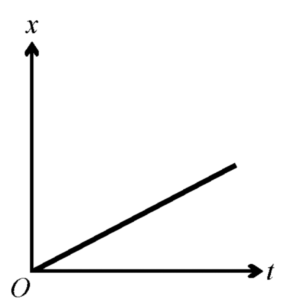| Step | Derivation/Formula | Reasoning |
|---|---|---|
| 1 | PE_{\text{initial}} = 0 | The object is initially on the ground, so its initial potential energy is zero (since potential energy is relative to height above a reference point). |
| 2 | PE_{\text{max}} = mgH | At maximum height H , all the kinetic energy has been converted to potential energy. Potential energy at height H is given by mgH , where m is the mass, g is the acceleration due to gravity, and H is the height. |
| 3 | PE_{\text{half}} = mg \frac{H}{2} | At half the maximum height \frac{H}{2} , the potential energy is mg \frac{H}{2} . |
| 4 | KE_{\text{initial}} = mgH | Using the principle of conservation of mechanical energy, the initial kinetic energy must equal the potential energy at maximum height, since there is no kinetic energy at that point (the object is momentarily stationary). |
| 5 | KE_{\text{half}} = KE_{\text{initial}} – PE_{\text{half}} | To find the kinetic energy at height \frac{H}{2} , subtract the potential energy at that height from the total initial mechanical energy. |
| 6 | KE_{\text{half}} = mgH – mg \frac{H}{2} = mg \frac{H}{2} | Simplifying, the kinetic energy at \frac{H}{2} is mg \frac{H}{2} , or half the initial kinetic energy. |
| 7 | ME_{\text{initial}} = ME_{\text{half}} = KE_{\text{initial}} | Total mechanical energy is conserved (since air resistance is negligible). The mechanical energy at any point during the motion is the sum of potential and kinetic energies and is equal to the initial total mechanical energy. |
| 8 | (a) False, (b) False, (c) False, (d) True, (e) False | Evaluating each statement: (a) Potential energy at \frac{H}{2} is not half of the initial (it’s \frac{1}{2} mgH ). (b) Speed is not directly proportional in this manner. (c) Total mechanical energy is constant, not halved. (d) Kinetic energy at \frac{H}{2} is indeed half of the initial kinetic energy, as shown in the calculations. (e) Since (d) is true, (e) is false. |
Phy can also check your working. Just snap a picture!
Which of the following graphs shows runners moving at the same speed? Assume the y-axis is measured in meters and the x-axis is measured in seconds.
You are standing on a bathroom scale in an elevator. The elevator starts from rest on the first floor and accelerates up to the third floor, 12 meters above, in a time of 6 seconds. The scale reads 800N. What is the mass of the person?
Traveling at a speed of 15.9 m/s, the driver of an automobile suddenly locks the wheels by slamming on the brakes. The coefficient of kinetic friction between the tires and the road is 0.659. What is the speed of the automobile after 1.59 s have elapsed? Ignore the effects of air resistance.

The displacement x of an object moving in one dimension is shown above as a function of time t. The acceleration of this object must be
An object undergoes constant acceleration. Starting from rest, the object travels 5 meters in the first second. Then it travels 15 meters in the next second. What total distance will be covered after the 3rd second?
By continuing you (1) agree to our Terms of Sale and Terms of Use and (2) consent to sharing your IP and browser information used by this site’s security protocols as outlined in our Privacy Policy.
| Kinematics | Forces |
|---|---|
| \Delta x = v_i t + \frac{1}{2} at^2 | F = ma |
| v = v_i + at | F_g = \frac{G m_1m_2}{r^2} |
| a = \frac{\Delta v}{\Delta t} | f = \mu N |
| R = \frac{v_i^2 \sin(2\theta)}{g} |
| Circular Motion | Energy |
|---|---|
| F_c = \frac{mv^2}{r} | KE = \frac{1}{2} mv^2 |
| a_c = \frac{v^2}{r} | PE = mgh |
| KE_i + PE_i = KE_f + PE_f |
| Momentum | Torque and Rotations |
|---|---|
| p = m v | \tau = r \cdot F \cdot \sin(\theta) |
| J = \Delta p | I = \sum mr^2 |
| p_i = p_f | L = I \cdot \omega |
| Simple Harmonic Motion |
|---|
| F = -k x |
| T = 2\pi \sqrt{\frac{l}{g}} |
| T = 2\pi \sqrt{\frac{m}{k}} |
| Constant | Description |
|---|---|
| g | Acceleration due to gravity, typically 9.8 , \text{m/s}^2 on Earth’s surface |
| G | Universal Gravitational Constant, 6.674 \times 10^{-11} , \text{N} \cdot \text{m}^2/\text{kg}^2 |
| \mu_k and \mu_s | Coefficients of kinetic (\mu_k) and static (\mu_s) friction, dimensionless. Static friction (\mu_s) is usually greater than kinetic friction (\mu_k) as it resists the start of motion. |
| k | Spring constant, in \text{N/m} |
| M_E = 5.972 \times 10^{24} , \text{kg} | Mass of the Earth |
| M_M = 7.348 \times 10^{22} , \text{kg} | Mass of the Moon |
| M_M = 1.989 \times 10^{30} , \text{kg} | Mass of the Sun |
| Variable | SI Unit |
|---|---|
| s (Displacement) | \text{meters (m)} |
| v (Velocity) | \text{meters per second (m/s)} |
| a (Acceleration) | \text{meters per second squared (m/s}^2\text{)} |
| t (Time) | \text{seconds (s)} |
| m (Mass) | \text{kilograms (kg)} |
| Variable | Derived SI Unit |
|---|---|
| F (Force) | \text{newtons (N)} |
| E, PE, KE (Energy, Potential Energy, Kinetic Energy) | \text{joules (J)} |
| P (Power) | \text{watts (W)} |
| p (Momentum) | \text{kilogram meters per second (kgm/s)} |
| \omega (Angular Velocity) | \text{radians per second (rad/s)} |
| \tau (Torque) | \text{newton meters (Nm)} |
| I (Moment of Inertia) | \text{kilogram meter squared (kgm}^2\text{)} |
| f (Frequency) | \text{hertz (Hz)} |
General Metric Conversion Chart
Example of using unit analysis: Convert 5 kilometers to millimeters.
Start with the given measurement: \text{5 km}
Use the conversion factors for kilometers to meters and meters to millimeters: \text{5 km} \times \frac{10^3 \, \text{m}}{1 \, \text{km}} \times \frac{10^3 \, \text{mm}}{1 \, \text{m}}
Perform the multiplication: \text{5 km} \times \frac{10^3 \, \text{m}}{1 \, \text{km}} \times \frac{10^3 \, \text{mm}}{1 \, \text{m}} = 5 \times 10^3 \times 10^3 \, \text{mm}
Simplify to get the final answer: \boxed{5 \times 10^6 \, \text{mm}}
Prefix | Symbol | Power of Ten | Equivalent |
|---|---|---|---|
Pico- | p | 10^{-12} | 0.000000000001 |
Nano- | n | 10^{-9} | 0.000000001 |
Micro- | µ | 10^{-6} | 0.000001 |
Milli- | m | 10^{-3} | 0.001 |
Centi- | c | 10^{-2} | 0.01 |
Deci- | d | 10^{-1} | 0.1 |
(Base unit) | – | 10^{0} | 1 |
Deca- or Deka- | da | 10^{1} | 10 |
Hecto- | h | 10^{2} | 100 |
Kilo- | k | 10^{3} | 1,000 |
Mega- | M | 10^{6} | 1,000,000 |
Giga- | G | 10^{9} | 1,000,000,000 |
Tera- | T | 10^{12} | 1,000,000,000,000 |
The most advanced version of Phy. Currently 50% off, for early supporters.
per month
Billed Monthly. Cancel Anytime.
Trial –> Phy Pro
A quick explanation
UBQ credits are specifically used to grade your FRQs and GQs.
You can still view questions and see answers without credits.
Submitting an answer counts as 1 attempt.
Seeing answer or explanation counts as a failed attempt.
Lastly, check your average score, across every attempt, in the top left.
MCQs are 1 point each. GQs are 1 point. FRQs will state points for each part.
Phy can give partial credit for GQs & FRQs.
Phy sees everything.
It customizes responses, explanations, and feedback based on what you struggle with. Try your best on every question!
Understand you mistakes quicker.

For GQs and FRQs, Phy provides brief feedback as to how you can improve your answer.
Aim to increase your understadning and average score with every attempt!
10 Free Credits To Get You Started
*Phy Pro members get unlimited credits

By continuing you agree to nerd-notes.com Terms of Service, Privacy Policy, and our usage of user data.